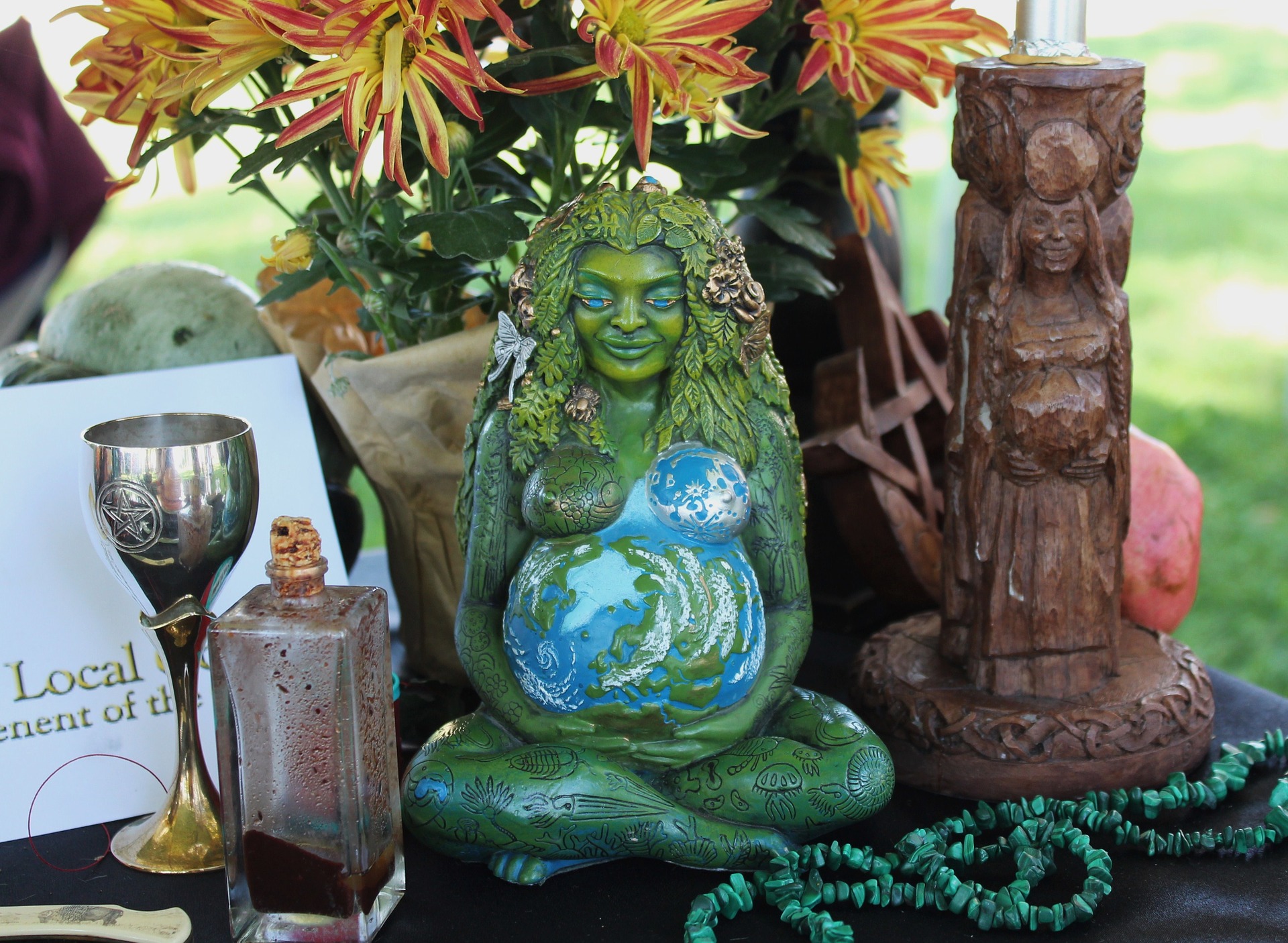 Submitted by Aradia on
Submitted by Aradia on

pixabay.com
Hedgewitchery is a combination of Traditional Witchcraft (NOT Wicca) and Shamanism, with herbalism, healing, and a deep love for nature added to the mix.
Hedgewitchery is loosely based on the old wise woman (and man) Tradition. The wise woman tradition is, quite possibly, the oldest eclectic magickal tradition. If you think “wise woman” and picture the strange old lady who sold herbs and magickal charms, acted as midwife and healer in the ancient times, you are not far off.
This tradition never truly died out, and in recent years, more and more people are turning to it and adapting it to modern times.
The word “Hedgewitch” may come from the Saxon word for Witch, haegtessa, which translates to “hedge-rider”. The Old Norse lay Havamal refers to “hedge-riders, witching aloft”.
Some may spell it with a capitol H, and some do not. Others will use a spelling such as “hedgewytch”. A few other names attached to this Craft: Hedge-Rider, Night Travelers, Myrk-Riders, Gandreidh (wand-rider), and Walkers on the Wind.
In the past, towns, villages and farmsteads had fences and hedgerows marking the boundary of the town, keeping the wilderness out. Crossing the hedge meant walking into the wild, where predatory animals, and all manner of fae creatures lived.
Back in the old times, many people never traveled more than a few miles from where they were born, and even then, they stuck to the roads and well-known paths of traders and huntsmen.
For the Hedgewitch, the hedge is a metaphor for the line drawn between this world and the next, between reality and dream, between the Upper, Middle, and Lower Worlds.
In the old days, the wise woman or Hedgewitch lived on the edges of the community, often on the other side of the town’s boundary hedge. They scratched out a living through herbalism, understanding nature, prophecy and divination as well as magick and healing.
The Hedgewitch served her community in many ways including but not only; midwifery, healing, protection spells, house blessings, crop and livestock blessings, through the selling of magickal charms and even curses. A Hedgewitch might sell one member of her community a small curse or ill-wish one day, and then charge its victim a fee to break the curse the next. The Hedgewitch was respected, and likely a little feared, because of these abilities, and because they had such a close relationship with nature and the magickal world.
Hedgewitches use herbs and shamanic techniques, such as drumming and meditation, to induce altered states of consciousness. They work with familiar spirits, their ancestral dead, plant and animal Totems to assist in their Otherworld work.
Hedgewitches often refer to shamanic journeys as “walking the hedge” or “crossing the hedge”. They also have a tendency to spend much of their lives with one foot on either side of the hedge, which makes them eccentric to say the least.
A Hedgewitch walks freely into caol ait (Gaelic), the “thin places” between one world and another. More experienced Hedgewitches learn not only to find such places, but how to use them effectively and how to open them even when the Veil is at its thickest between the sabbats.
For the Hedgewitch there is no separation between normal life and their magickal one, for their normal life is magickal.
In modern times, a Hedgewitch is usually found outside the city, perhaps on an acreage or farm, often practicing by her self or perhaps within the family. They work much as the old wise women of old, helping neighbors, friends and family with ailments, shamanic healing and even blessing the odd field.
Hedgewitches will work a lot in cultivated fields, gardens and farmsteads, but often prefer time spent in the woods and other wild areas. A Gardenwitch, Greenwitch or Kitchenwitch may work mostly in her cultivated garden; a Hedgewitch will likely spend more of her time gathering her herbs and such from the wild places. Although the practices have changed quite a lot, you will find most Hedgewitches practice as close to traditionally as possible in these modern times.
Hedgewitches are very adaptable. You may find a Hedgewitch casting an old-fashioned prosperity or fertility spell on a modern tractor as a favor to a neighbor, for example.
The main distinction between Hedgewitchery and other forms of Witchcraft is that Hedgewitches have less interest in the religious/ceremonial aspects of Coven or group Witchcraft, having an individual and often unique way of relating to life, spirituality and Creation.
A Hedgewitch is less likely to perform formal magickal workings, preferring simpler folk, or low, magic. The only tradition Hedgewitches typically follow is a reverence for Nature, though some may come from a more formal Pagan path originally.
Most Hedgewitches do what ever comes natural to them; they follow their instincts, and their heart. Most use few made man objects in their spells and rituals. Their tools are typically very practical, such as a walking stick or pruning shears, and their tools are hand made by them as much as possible. They avoid complicated formulated magick, practicing an earthy and simple form of ritual and magick. Some Hedgewitches do not cast Circles when practicing outdoors, for they feel it cuts them off from nature.
Hedgewitches usually study herbalism with gusto, as well as seeking knowledge and understanding of the ways of Nature, the cycle of the seasons and the wildlife and plant-life in their area.
Hedgewitches will not only know how to grow herbs in a garden, but also where and how they grow in the wild and how to gather them. They usually have a great deal of lore on trees and plane life, animals and the wilderness in general. Healing, divination, the use of trance inducing herbs and all manner of fertility rites are also a part of this Tradition.
Hedgewitches tailor their Tradition to suit themselves. Some may focus on herbalism, others study midwifery; some may practice reiki, and others may be well versed in healing with crystals. Some Hedgewitches may choose to be a jack-of-all-trades, but a master of none.
Sadly, there are few men called to this path, and this may or may not change over time.
While Hedgewitchery is typically a solitary path, this is not always so. Even the most hermit-like Hedgewitch can still be found at local Pagan events. Also, some of their practices, especially the shamanic ones, require a trusted friend to watch over their body while their soul is elsewhere.
Hedgewitches are unlikely to become involved with Witch wars within the community, and depending on the individual’s personality, are more likely to prefer maintaining friendly relations with the majority of the Pagan community. Some may have friends or domestic partners who follow another Pagan or Heathen path, and they will often happily join in any ritual or activity if invited.
Spirituality in Hedgewitches varies and depends on the individual; usually they look to their own heritage and ancestry. Most commonly, Hedgewitches practice some form of NeoPaganism. The daily spiritual practice of a Hedgewitch will be adapted to her individual abilities, interests and life style.
One Hedgewitch may start her mornings offering up prayers of thanksgiving to her gods as she collects eggs from the chicken coop. Another Hedgewitch may spend her mornings in quiet meditation on her patio; sipping tea and watching the deer graze in her lawn. A third Hedgewitch may say a quick prayer at the household shrine before racing off to work.
So what the heck IS a Hedgewitch anyways?
Some people may prefer rural and/or wild settings and be a little wild themselves. They may be looking for a Shamanic Witchcraft Tradition that leans heavily on natural magic, understanding the wilderness and the practice of healing lore. They may have little interest in organized religion. They may wish to blaze their own Path, like the wise women of old.
They may just be ‘Hedgewitches’.
http://www.woowoomedia.com/hedgewitches-the-natural-magicians/